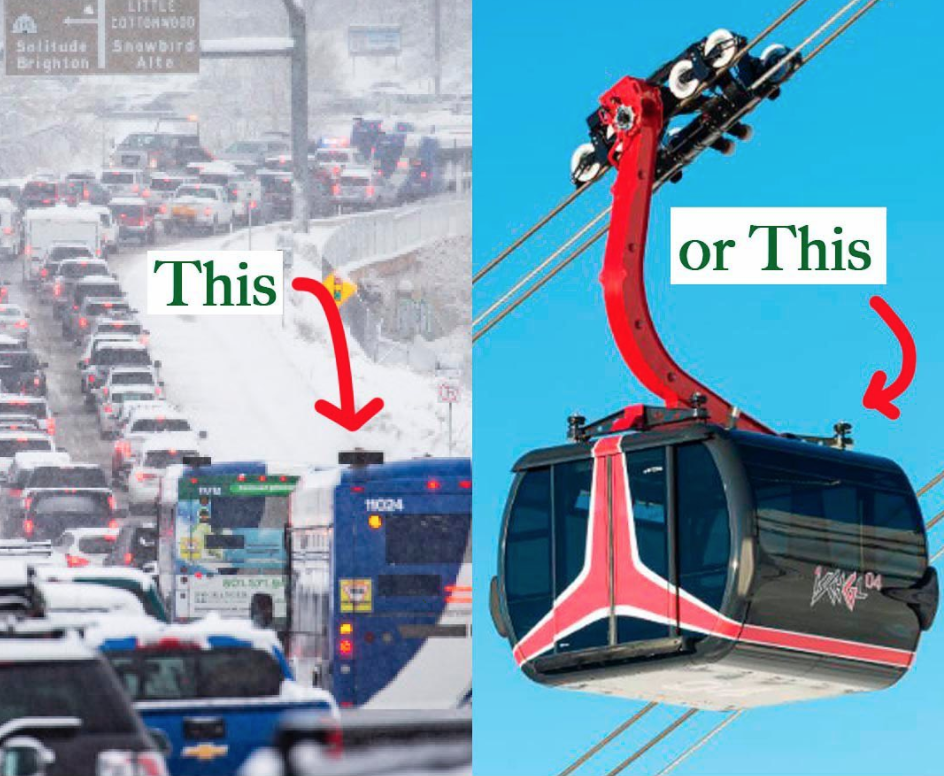
Salt Lake County and City officials yesterday announced the county’s official position on the controversial gondola in Little Cottonwood Canyon––they’re firmly against the plan. The announcement comes a day after Ski Utah threw their support behind the gondola as the solution to Little Cottonwood Canyon’s traffic woes. The public comment period ends this Friday, September 3rd.
- Related: Ski Utah Strongly Supports a Gondola as the Answer to Little Cottonwood Canyon Traffic Woes
“In a way, it’s kind of cool, I guess, but I think it’s absolutely wrong for this gorgeous canyon.”
– Salt Lake County Mayor Wilson
Mayor Wilson and County Council Member Jim Bradley would like UDOT to ‘go back to the drawing board’ and come up with a more cost-effective solution for the canyon, reports the Salt Lake Tribune. Like improving the bus service.
“It is fiscally irresponsible to spend a billion dollars unless you’ve tried a less expensive, more manageable solution first—let alone the impact on the canyon.”
– Mayor WIlson
UDOT has spent more than three years trying to solve the traffic problems in Little Cottonwood Canyon, UT, narrowing down all the alternatives from an initial 124 to 5, and now to their final two preferred alternatives. On Friday 25th June 2021, they opened a 45-day public comment period, which was later extended. They also released the draft Environmental Impact Survey.
- Related: Utah Department of Transportation Offers 2 New Ways to Mitigate Traffic in Little Cottonwood Canyon

One of the two preferred alternatives is a gondola, from La Caille through Little Cottonwood Canyon to Snowbird and Alta. The video above depicts what that might look like:
Want to know what having a gondola in Little Cottonwood Canyon will be like? This video lets you experience the actual system proposed.
Beginning at the base station proposed at La Caille, the video shows the journey from the hub where gondola riders start to the top of the canyon. A gondola system would offer a never-before-experienced vantage point of the beauty of the canyon, while also preserving it for future generations.
Gondolas provide a long-term solution to challenges that have plagued the Cottonwood Canyons for decades. SR-210 – which is the only road in and out of Little Cottonwood Canyon – is the most avalanche prone highway in North America and welcomes over a million visitors year-round.
Gondolas provide secondary emergency access when that road is blocked by avalanche debris or stuck buses and cars in bad weather.

The main purpose of the project is to significantly improve the safety, mobility, and reliability of transportation to Snowbird and Alta, up US Highway 210, Little Cottonwood Canyon.
Of the five shortlisted alternatives, two really stood out above the rest. They are:
- The Enhanced Bus Service in Peak-Period Shoulder Lane, with a rider time of 36 minutes.
- Gondola B, with a base station at the mouth of Little Cottonwood Canyon near La Caille.
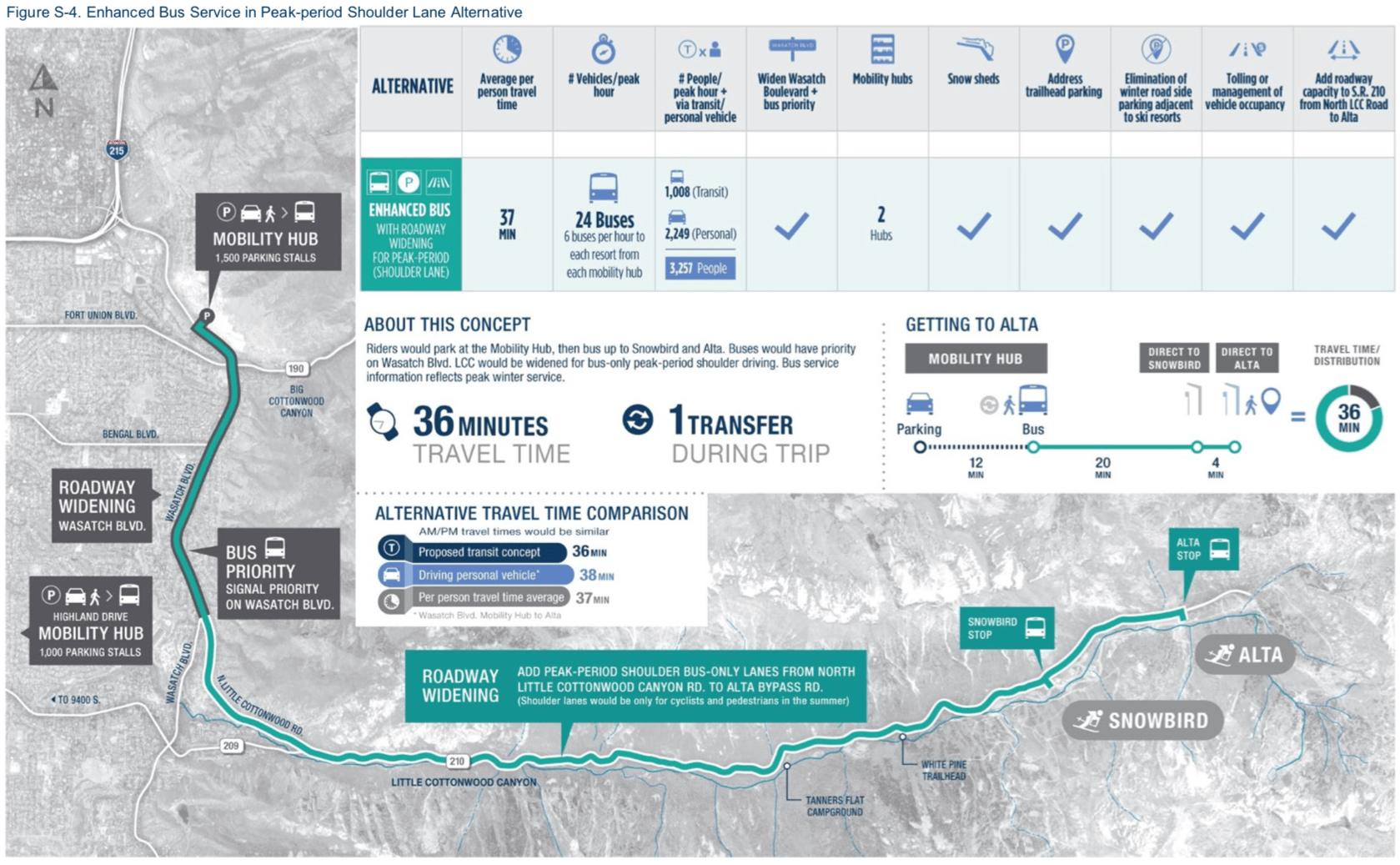
For those concerned about the comparative costs of each project, the gondola would cost more initially but would cost less than the bus service to operate. Thus, over the course of thirty years, both options would cost taxpayers the same amount.
The comment period started Friday and two public hearings are planned for July. UDOT hopes to have a final decision sometime during next winter.
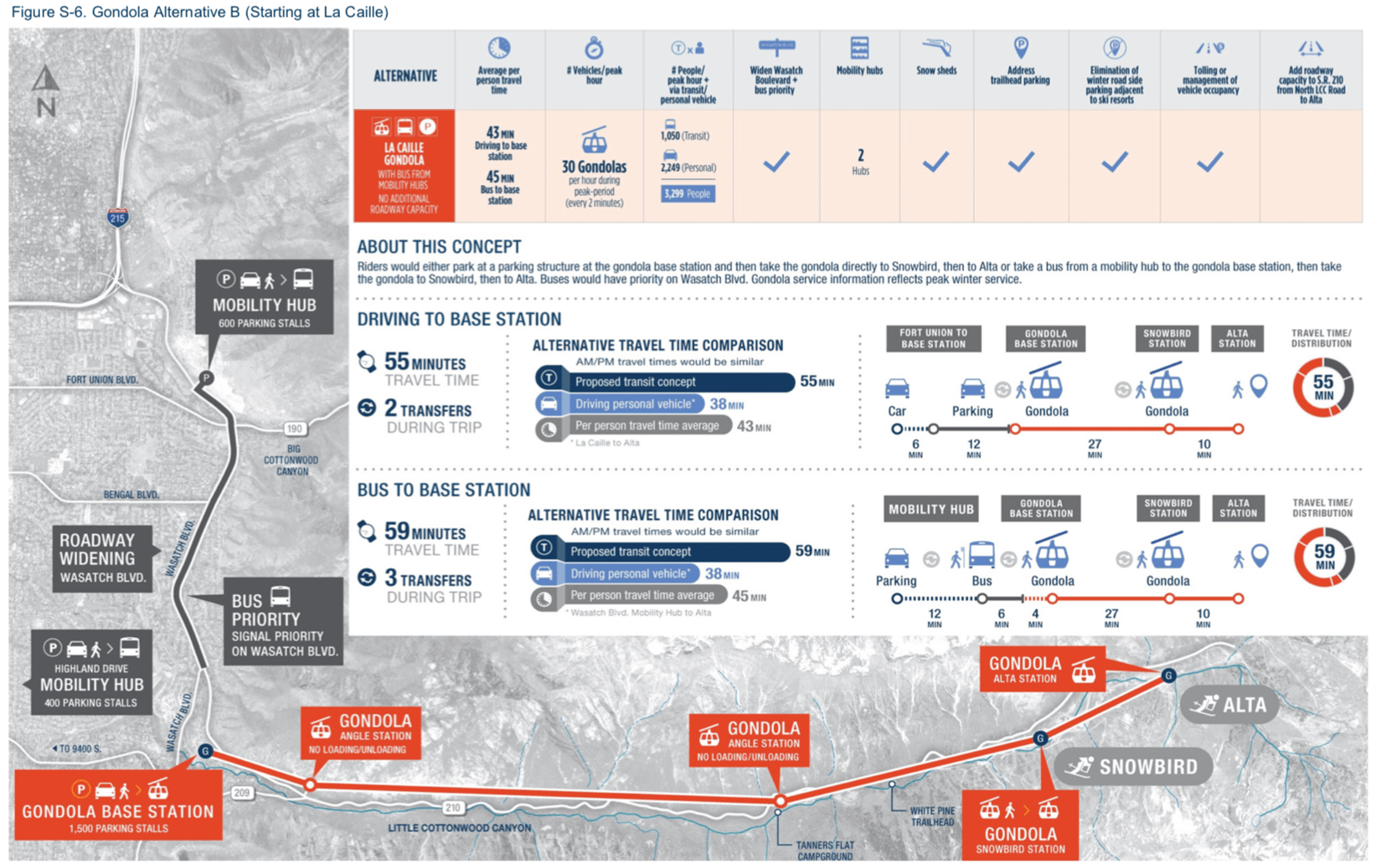
In 2020, the Utah Department of Transportation announced three possible strategies to help reduce traffic in Little Cottonwood Canyon (U.S. Highway 210): a cog railway or a gondola to shuttle visitors to ski resorts Alta and Snowbird, or a new and improved bus system to shuttle more skiers up the canyon.
And out of the three proposed options, the gondola appeals the most to Utah’s governor Spencer Cox. Deseret News reports that Cox said it would be “cheaper than the train solution, but more expensive than the bus solution.” He also said it would be more “weather immune” because heavy snowfall, as well as avalanches and avalanche control, all increase traffic in the canyon, often causing painfully long lines of skiers waiting in their cars on the gridlocked highway.
“Just the ability to move people at such a high rate of speed and get people up and down very quickly—it’s much more efficient than the bus system would be,” Cox said to an interviewer with Deseret News. “And it also has the support of the partners and the ski resorts. There’s a willingness there for them to participate on the private side to reduce the cost to taxpayers, so there’s an opportunity to bring those costs down as they pay for some of that as well.”
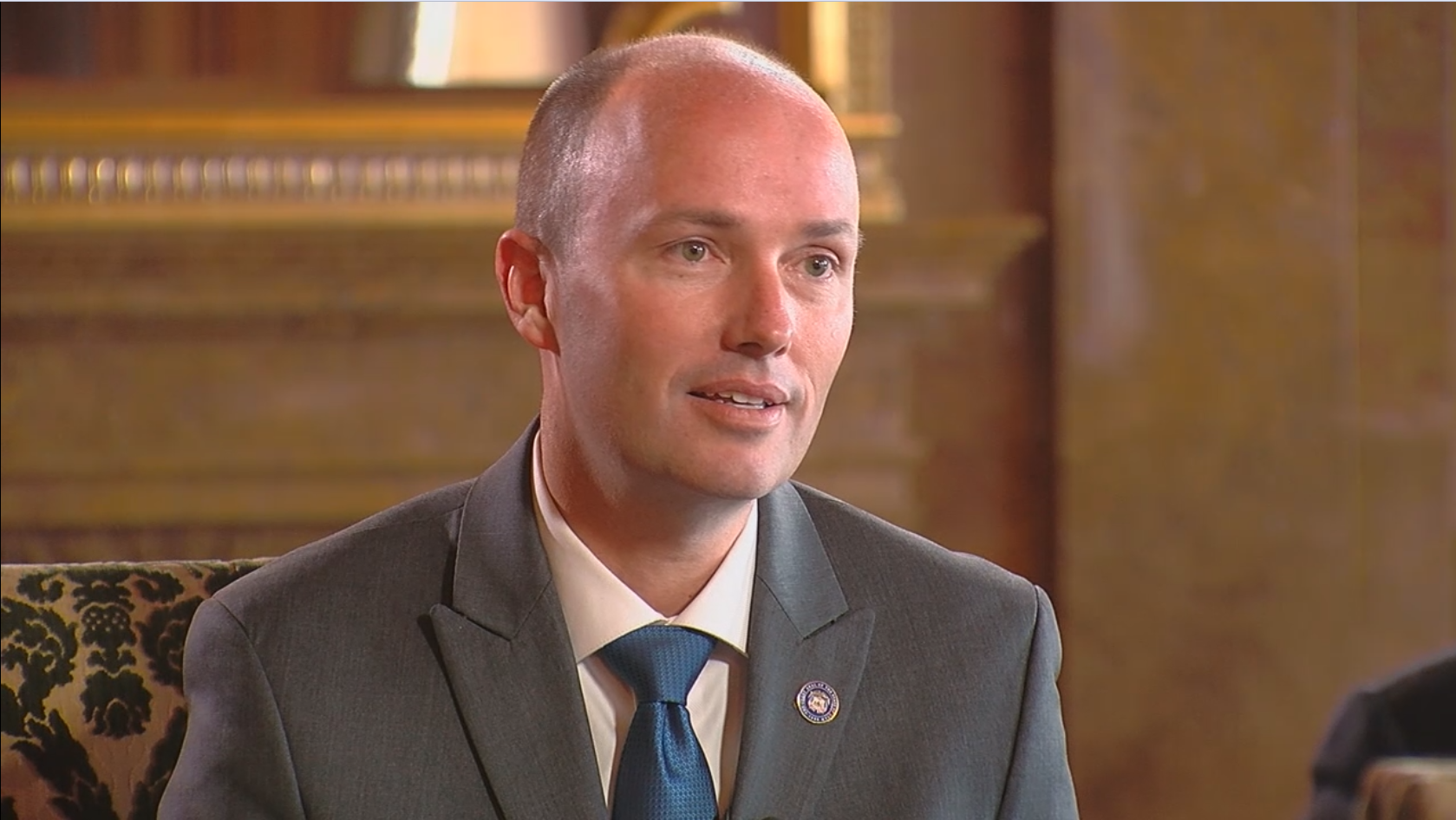
Gov. Cox also thinks a gondola would benefit canyon recreation in the summer along with the winter because it could become a “tourist attraction in and of itself.” Apparently, he is leaning in the direction of a canyon gondola at this time but is still a ways away from making a final—very expensive—decision.
Although Cox favors improving transportation up the canyon with the gondola, not everyone is so convinced that any of the three proposals have the canyon’s best interest in mind. According to the Deseret News, all options were immediately denounced by conservation organizations and backcountry enthusiasts who say “they are an attempt to turn the canyon into an amusement park.”
The Wasatch Backcountry Alliance—a recognized voice for the backcountry community involved in human-powered winter recreation in the Central Wasatch Mountains—wrote the following in a Facebook post concerning the Utah Department of Transportation’s 2020 announcement to improve canyon travel:
“The Wasatch Backcountry Alliance is concerned the shiny appeal of an expensive train or gondola system may distract us from our goals or actually make things worse,” Brad Rutledge said, co-founder of the organization and current board member. “These solutions not only miss the target on making things better, but the train and gondola concepts threaten many of the things that make the Wasatch Mountains so amazing today.”
The three options proposed by state officials come as a result of more than 6,500 public comments and will be included as alternatives as part of the Little Cottonwood Canyon draft environmental impact statement, according to Deseret News.
If Gov. Cox approves the gondola, it would have a base station in Sandy, where visitors would park in a proposed 1,500-space structure on the west side of North Little Cottonwood Road at La Caille. Then, the gondola would allow direct transportation eight miles up the canyon to Alta and Snowbird and take an estimated 30-40 minutes to get there.
But if legislators decided to go with the cog rail, it would start from the same Sandy base station as the proposed gondola and parking structure. It would include a diesel-powered train with a cogwheel on a track underneath, giving direct service to Alta and Snowbird.
And if they decided on buses, there would then be 24 buses going up to the resort at six buses per hour.
All options raise environmental concerns for the canyon’s watershed. Canyon enthusiasts such as the Wasatch Backcountry Alliance and Save Our Canyons say that these options will bring too many visitors to the already popular Little Cottonwood Canyon and ruin it. Gov. Cox, on the other hand, believes it would help drive tourism and economic gain for the state of Utah.
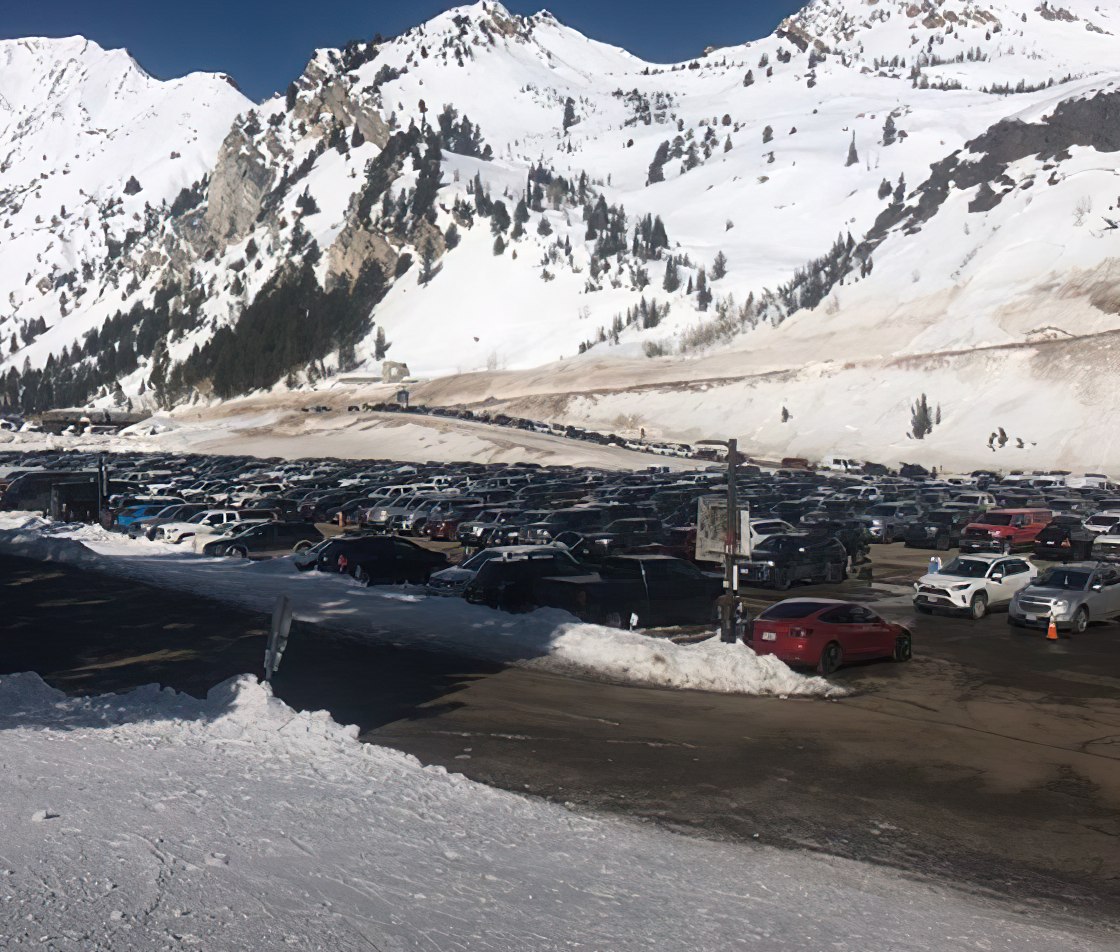
We ignored you the last time also Anonymous. We can’t handle your level of genius.
That was a very simple Cut & paste from yesterdays article. Great job Snowbrains, you are top notch journalist.
Educate yourself and read about forest miss management. Climate change can’t be fix today, but reading about it will sure help future generations.
Somebody got “triggered” 🙂